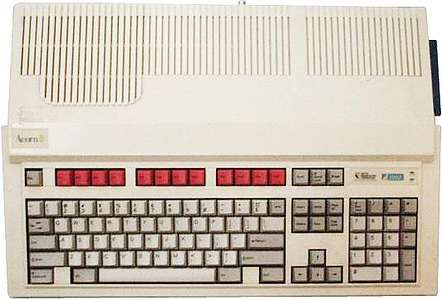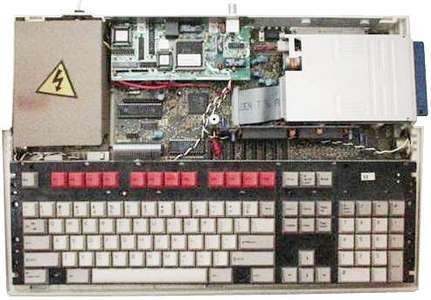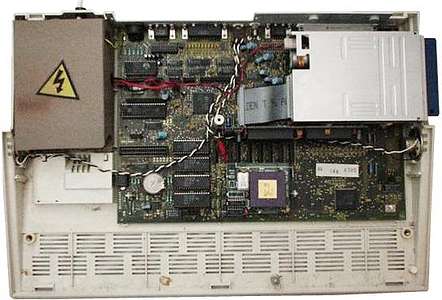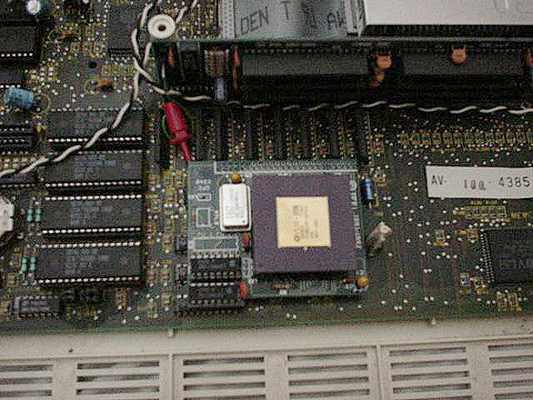A3000
Cut-down Archimedes in an Amiga-style case

This is the A3000, a later, cut down version of the earlier A300/400 ranges. Housed in an Amiga style case, it was cheaper and probably designed to appeal to people who wanted something to play games on as well as do homework. It lacked a serial port (it just had a hole and a warning label) and wasn't very expandable, but was a good entry-level machine for many in the pre-RiscPC era.
The later A3010, effectively the replacement for this machine, is easily distinguishable because it had green function keys instead of red; it also had a serial port and a high density disk drive, and included a TV out and a 9-pin digital joystick port.

Taking the lid off, notice the cardboard housing for the power supply on the far left; this meant that all upgrades were supposed to be done by qualified Acorn dealerships due to a risk of electrocution. This was later replaced with a proper metal housing (perhaps in lieu of a strong dealership network).
This particular machine also has a network card in place (middle-top). As the internal upgrade slot is now full, this machine has to have any other upgrades - such as a hard drive interface - on the outside, using the single external upgrade slot (top right, above the floppy drive unit).

With the keyboard and network interface removed, we can see the insides of this machine a little better. At the bottom (middle) we can see the processor (the block with a gold square on it). This is an upgrade to a 36Mhz ARM3 from the original 8MHz ARM2; alas as this kind of upgrade was not foreseen the lid and keyboard doesn't fit properly any more! The A3000 came originally with RISC OS 2 and 1MB of memory; this machine has been upgraded to RISC OS 3.1 (the four chips bottom-left-ish) and 4MB of memory (between the processor and the floppy drive - it flaps slightly, causing the machine to hang and refuse to restart until it's fixed).

As you can see, this upgrade was achieved using a daughterboard which has the unfortunate side effect of raising the chip somewhat (hence the ill-fitting case). Note also the rather dodgy-looking red probe and wiring. At the top of this picture is the memory upgrade, which appears to have flopped forwards slightly - again. Sigh. The four chips that make up RISC OS 3.1 are at the left of this picture.